
As a general rule, you should start feeding colonies in mid August and aim to finish by late September. As the nights draw in and the cooler autumn temperatures have us reaching for our woolly jumpers, so bees are preparing for their winter.
Bees don’t hibernate as individuals but in a way, the colony as a whole can be thought to do so. To have the best chance of surviving the winter, the bees need to be healthy, be headed by a properly mated and laying queen, have sufficient accessible food stores and be in a watertight cavity (hive).
As autumn approaches, forage sources disappear, and the colony begins to form its winter cluster. With brood, the bees maintain the centre of the cluster at brood nest temperature; slightly below without brood. The cluster’s packing density is adjusted according to the temperature of the outside layer. The cluster forms around the latest brood nest and then, as the bees consume food, it moves upwards. It is important to ensure that bees have food above their heads for winter. As bees in the centre get hungry, they move to the outside for food, displacing those who have fed, setting up a slow moving convection current.
YOUR COLONY NEEDS TO BE HEALTHY
The main killers in the winter or early spring are Nosema and Varroa. Nosema affects the bee’s gut and shortens its life by preventing proper food digestion. If they survive to the spring, affected colonies can build up slowly, dwindle or even die. The best way of dealing with Nosema is to transfer the colony onto clean comb, ie, fresh foundation or drawn comb that has been fumigated with an 80 per cent solution of acetic acid to kill the spores. Bear this in mind for any affected colonies next spring. There are no authorised treatments for Nosema.
As the brood nest shrinks, so does the number of cells in which varroa mites can breed.
This story is from the September 2024 edition of The Country Smallholder.
Start your 7-day Magzter GOLD free trial to access thousands of curated premium stories, and 9,000+ magazines and newspapers.
Already a subscriber ? Sign In
This story is from the September 2024 edition of The Country Smallholder.
Start your 7-day Magzter GOLD free trial to access thousands of curated premium stories, and 9,000+ magazines and newspapers.
Already a subscriber? Sign In
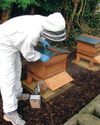
Making delicious golden mead is easy
Many people think of mead as something of historical interest, but good mead is delicious and surprisingly easy to make. Hugh & Fiona Osborne are on a mission to bring mead back to smallholders and small farmers
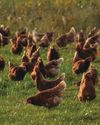
Olfaction is a very misunderstood sense in hens
Paul Donovan investigates the sense of smell, and how it impacts behaviour.

Safeguarding your smallholding - who owns the land?
Agricultural journalist, smallholder and editor of Ford & Fordson Tractors Magazine Jane Brooks, joins us for her regular look at the world of agricultural machinery, smallholding and life in general.
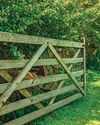
Do Government Policies Make Now a Good Time to Sell Land?
lan Barnett, National Land Director, Leaders Romans Group (LRG) looks at recent planning developments
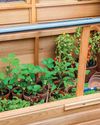
Get growing early with some TLC
Lee Senior shows how to provide tender, loving care with early season warmth and protection
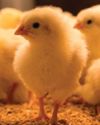
Pre-Season Checks for Your Incubator
We asked Brinsea Incubator Specialists how to get off to a good start to a successful hatching season

Get prepared for keeping bees
Claire Waring looks at what you need to know before you become a hands on beekeeper.

March that heralds in spring
It’s also a busy one on the smallholding and in the garden
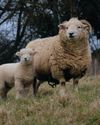
Exmoor Horn sheepnot just for Exmoor!
Helen Babbs meets the the hardy hill breed with excellent fleece

Introducing new goats to your herd
Matt Huggins explains how to keep new members and old members safe and sound when first meeting